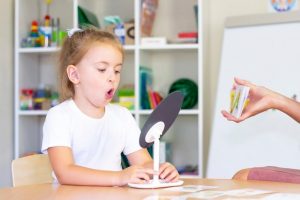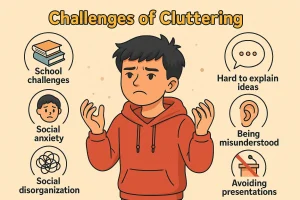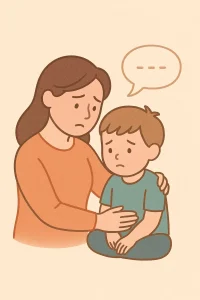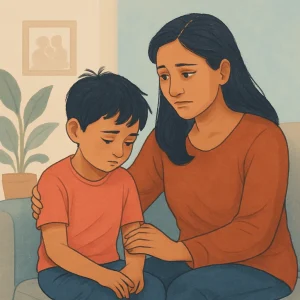Best Activities for Supporting Language Development
By Rajini D
Last Updated: November 22, 2024
Language development during early childhood is a pivotal aspect of a child’s overall growth, influencing their ability to communicate, learn, and express emotions effectively. As primary caregivers, parents play a crucial role in nurturing these skills, turning everyday moments into rich opportunities for learning and connection. Through simple, fun language development activities tailored to their child’s evolving needs, parents can lay a strong foundation for robust language skills that will serve their child well, both in school and life.
Engaging with your child through games, storytelling, and routine interactions isn’t just about learning new words—it’s about building confidence, understanding, and a love for communication. In this guide, we explore practical, enjoyable language development activities that parents can easily incorporate into their daily routines to enhance their child’s language development.
How to Boost Language Skills in Toddlers
Interactive and engaging activities are crucial in promoting cognitive and language growth in young learners. These activities not only make learning enjoyable but also have significant benefits for a child’s development in understanding and using language effectively. Here’s how these activities foster communication skills and cognitive development:
Benefits of Engaging Activities on Cognitive and Language Growth
- Enhanced Problem-Solving Skills: Activities like puzzles or matching games improve cognitive abilities by challenging children to think critically and solve problems. For example, matching words to pictures helps in making connections between visual cues and words, crucial for vocabulary building.
- Memory Enhancement: Games that require remembering rules or sequences, like “Simon Says,” aid in memory development, which is directly linked to language learning. Enhanced memory allows children to retain new words and concepts more effectively.
- Increased Focus and Attention: Activities that require concentration, such as building blocks or arts and crafts, help children develop longer attention spans. This skill is essential for listening and understanding complex language structures in conversations and stories.
Also read: Language Development: Stages, Tips, and Common Challenges
Table of Activities and Their Language Benefits
Here is a table summarizing some common activities, the skills they develop, and how these skills contribute to language development:
| Activity | Skill Developed | Impact on Language Development |
|---|---|---|
| Storytelling | Imagination & Vocabulary | Enhances vocabulary, grammar, and the ability to construct stories |
| Role-playing | Expressive Language | Improves articulation, sentence structure, and social usage |
| Puzzles | Problem-solving & Memory | Aids in vocabulary retention and logical structuring of sentences |
| Art and Crafts | Focus & Fine Motor Skills | Encourages descriptive language and narrative skills |
| Interactive Reading | Comprehension & Discussion | Promotes vocabulary expansion and inferential skills |
Top Language Games for Toddlers and Preschoolers
Storytelling: Techniques for Engaging Children with Imaginative Stories
Storytelling transforms reading into an interactive experience. To captivate your child, choose stories that spark their curiosity—maybe tales of dragons or adventures at sea. As you read, change your voice for different characters and pause to ask questions like, “What do you think will happen next?” This makes the session interactive and helps your child think critically. After reading, talk about the story to reinforce new words and encourage your child to express their thoughts, asking questions like, “Why do you think the dragon was sad?”
Labeling Game: Using Household Items to Teach New Words
The labeling game is simple yet effective. Write names of everyday items on sticky notes—such as ‘sofa,’ ‘window,’ and ‘spoon’—and stick them on the corresponding items. Make it fun by asking your child to find the item you name, adding challenges like, “Find something that tells time.” This helps them connect words to their meanings and uses in daily life.
The Power of Reading: Top Books for Language Growth
Discuss the Impact of Reading on Vocabulary and Comprehension
Reading regularly to your child introduces them to new words and ideas, boosting their language skills. For instance, while reading a book about animals, discuss the sounds each animal makes and their habitats, enhancing both vocabulary and general knowledge.
Feature Interactive Reading Strategies with Picture Books
Picture books are great for young learners. As you read, pause to point at pictures and discuss them. Ask your child to describe what they see and guess what might happen next. For example, if you’re reading a book with a picture of a rainy scene, you might ask, “What do we wear when it rains?” This engages your child more deeply, turning reading into a dynamic learning activity.
By incorporating these simple, interactive activities into your daily routine, you foster a fun and enriching environment for your child’s language development. Each game and reading session is not only educational but also strengthens the bond between you and your child, with support from Wellness Hub’s expertly curated resources.
Know more: 6 Amazing Children’s Books for Speech and Language Growth
Flashcards and Visual Aids: Tools to Teach Vocabulary
Overview of Using Flashcards for Effective Vocabulary Learning
Flashcards are a classic, versatile tool for vocabulary learning. They can be used to introduce new words, reinforce previously learned vocabulary, and test knowledge through quick, interactive sessions. To get started, create flashcards with words and corresponding pictures—this links the visual element to the verbal, enhancing memory retention. For instance, a flashcard might show a picture of an apple with the word “apple” beneath it. As your child grows more confident, you can introduce more complex words and concepts.
Read more about on Fruits Flashcards for Kids – Fun and Educational Learning Tool
Tips for Incorporating Visual Aids into Everyday Learning
Visual aids extend beyond flashcards; they include charts, maps, and digital resources that can all enrich your child’s learning environment. To weave these into daily routines, place labels on items around your house or use a chart to track daily activities with corresponding vocabulary words. For example, a morning routine chart might include images and words like “brush teeth,” “pack backpack,” and “read book.” This visual reinforcement makes learning natural and part of everyday life.
Everyday Routines That Boost Language Skills
Word Chain: How to Integrate Vocabulary into Daily Conversations
A word chain is a fun, engaging way to build vocabulary and sentence construction skills. Start with a simple word and challenge your child to add a related word, building a chain of related terms. For example, if you start with “dog,” your child might add “bark,” then “tree,” and so on. You can play this game during daily activities like meals or car rides, making it a fun part of your routine.
Role-playing: Utilizing Pretend Play to Teach Language through Scenarios
Role-playing is a fantastic way to develop language in context, encouraging your child to use new vocabulary in full sentences. Create scenarios where your child can pretend to be a character, like a doctor, teacher, or store clerk. Use props to make the experience more realistic and vocab-rich. For instance, if they are playing a doctor, introduce terms like “stethoscope,” “bandage,” and “temperature.” This not only teaches new words but also helps in understanding their use in real-life contexts. By integrating these engaging activities into your daily routines, you provide continuous opportunities for your child to develop their vocabulary and language skills.
Conclusion
Discover the joy of helping your child grow through fun language activities! From storytelling to role-playing, each game boosts vocabulary and sharpens communication skills. Remember, regular practice turns these playful moments into lifelong language mastery. Visit Wellness Hub for more creative ideas and resources that make learning exciting and straightforward. Let’s keep conversations flowing and make every day a chance to learn and laugh together. Your involvement makes all the difference—start exploring today and watch your little one thrive as a confident communicator!
Frequently Asked Questions:
1. What are the best language development activities for toddlers?
Simple games like “I Spy,” singing nursery rhymes, and engaging in back-and-forth conversations can significantly enhance your toddler’s speaking skills. These activities make learning fun and encourage your child to practice new words and phrases in a supportive environment.
2. How often should I play language development games with my child?
Aim for daily sessions of about 10-15 minutes each. Regular, short activities are more effective than occasional longer sessions, as they keep learning consistent and integrate seamlessly into your daily routine, helping reinforce language skills.
3. Can flashcards really help my child learn new words?
Yes, flashcards are an excellent tool for building vocabulary. They introduce new words with visual associations, making it easier for children to remember and recall. You can enhance their effectiveness by using pictures and words together and by involving your child in creating the flashcards.
4. What are some easy storytelling tips to help language development?
Keep your stories interactive by asking questions, using different voices for characters, and encouraging your child to predict what will happen next. This not only makes the story more engaging but also stimulates your child’s language processing and creative thinking skills.
5. How does role-playing support a child’s language skills?
Role-playing allows children to practice vocabulary and phrases in real-life contexts, enhancing their ability to use language appropriately and confidently. It also helps develop social communication skills as they learn to express thoughts, negotiate, and take turns speaking.
6. Are there any specific books recommended for language growth in kids?
Books rich in rhyme and repetition are ideal for young children, such as “Brown Bear, Brown Bear, What Do You See?” by Bill Martin Jr. and Eric Carle. These types of books help children anticipate and remember words, improving their ability to learn and use new vocabulary.
7. What everyday routines can help improve my child’s language development?
Incorporate language learning into daily activities like mealtime, bath time, and shopping. Narrate what you are doing, ask your child questions, and encourage them to describe their actions and feelings. This consistent exposure helps improve vocabulary and sentence structure.
8. How can I make learning new words fun for my child?
Turn vocabulary learning into a game, such as a treasure hunt for items around the house with written or spoken clues. Use apps or online resources that turn learning into an interactive experience, and always praise your child’s efforts to keep them motivated.
9. What role do visual aids play in teaching vocabulary?
Visual aids like picture books, posters, and real-life objects can help children connect words to their meanings, making it easier for them to understand and use new vocabulary. They also support memory retention by providing visual context to the words learned.
10. At what age should I start language development activities with my child?
It’s beneficial to start as early as infancy by speaking to your child, singing, and reading simple books. As they grow, tailor activities to match their developmental stage, continually introducing more complex language concepts and tools as they are ready.
About the Author:
Rajini Darugupally
M.Sc., Speech-Language Pathologist (9+ years of experience)
Rajini is a passionate and dedicated Speech-Language Pathologist with over 9+ years of experience, specializing in both developmental speech and language disorders in children and rehabilitation in adults. Currently, at Wellness Hub, she thrives in a team environment that values innovation, compassion, and achieving results for their clients.
Book your Free Consultation Today
Parent/Caregiver Info:
Client’s Details:
* Error Message









